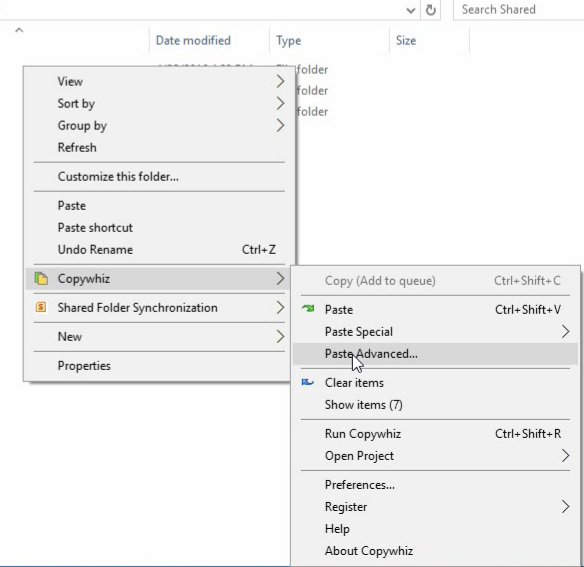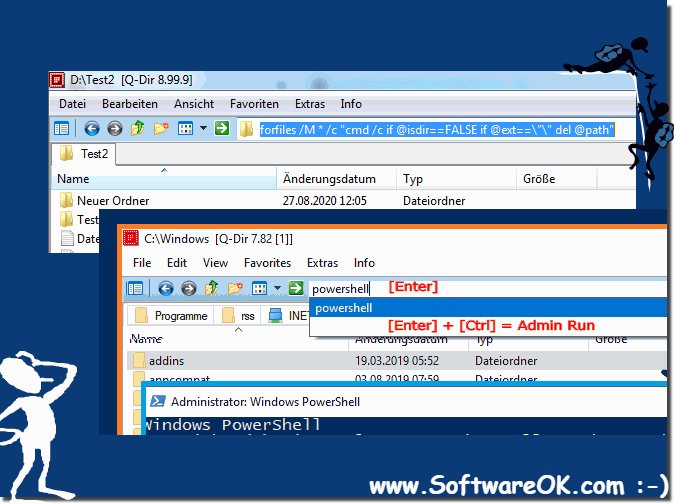

The basic syntax of the robocopy command is: robocopy.
#Xcopy to compare folders how to#
How to use Robocopy to Transfer Files in Windows 10 /I - If in doubt, always assume the destination is a folder./C - Continue copying even if an error occurs.


Now, when you're in the command prompt, you can type Xcopy command as below to copy folders and subfolders including contents.Right-click Command Prompt from the list and select Run as administrator. Click Start and type cmd in the search box.Next, I will explain how to use the Xcopy command to copy folders and subfolders and their contents from one location to another. And there are plenty of options and switches for different demands. The most used command syntax would be: XCOPY source. How to Use Xcopy and Robocopy Step by Step Copy folders and contents using Xcopy command in Windows 10 XCopy has no monitoring support.īoth XCopy and Robocopy have support for copying over the "archive" attribute on files, while Robocoy copies over more file attributes than XCopy, including security, owner, timestamps, and auditing info. This is similar to saving files regularly while processing them, but it is more efficient. “/MON:n” copies the file to the destination with ‘n’ or more changes, while “/MOT:m” will check the file every “m” minutes for any changes, then copies it when there are. Robocopy supports file and directory monitoring with the " /MON" or " /MOT" commands. ◑ Robocopy has MONITORING support, Xcopy does not This automation is most useful for performing daily backups or large batch jobs that require some time but do not require interaction. Using the " Run Hours" (/RH) option with Robocopy allows you to set when copies should be done rather than the time of the command as with Xcopy. ◑ Robocopy has AOTUMATION settings, XCopy does not It will also check the files in the target directory against the files to be copied, and will not waste time copying unchanged files. Robocopy will be able to check the target directory and delete files that are no longer in the main tree, instead of copying all files from one directory to another. Unlike Xcopy, Robocopy is used to mirror or synchronize directories. ◑ Robocopy uses MIRRIORING, XCopy does not Both are useful programs for all types of bulk file copying, but Robocopy has some options to make the job easier. XCopy is included in most versions of Windows, but has been less used since Robocopy was released.

These two command line tools are often used in file transfers for Windows. ✡ Robocopy can mirror 1 folder to another, deleting files in the destination that don’t exist in the source folder. ✡ Robocopy can schedule a copy and paste operation. ✡ Robocopy can exclude some files or folders. ✡ Robocopy can pre-specify what to do with conflicting file names. The additional features Robocopy has are listed below: It has been a standard feature of Windows since Windows Vista and Windows Server 2008. ROBOCOPY, for "Robust File Copy", is a command-line directory and/or file replication command for Microsoft Windows.
#Xcopy to compare folders archive#
✡ Xcopy can help identify updated files (based on archive attribute or based on a given cutoff date), so it’s useful for incremental backup needs. ✡ Xcopy can exclude files based on file name or extension. ✡ Xcopy can copy all files including subdirectories recursively and replicate the source directory structure as it is. The additional features Xcopy has are listed below: It is a built-in command on Windows OS which has advanced features than the basic Copy command. In computing, XCOPY is a command used for copying multiple files or entire directory trees from one directory to another and for copying files across a network. Some basic information about them is as follows. Both of them can help you copy files and folders from one location to another. Xcopy and Robocopy are two Windows built-in command line file copy utilities.


 0 kommentar(er)
0 kommentar(er)
